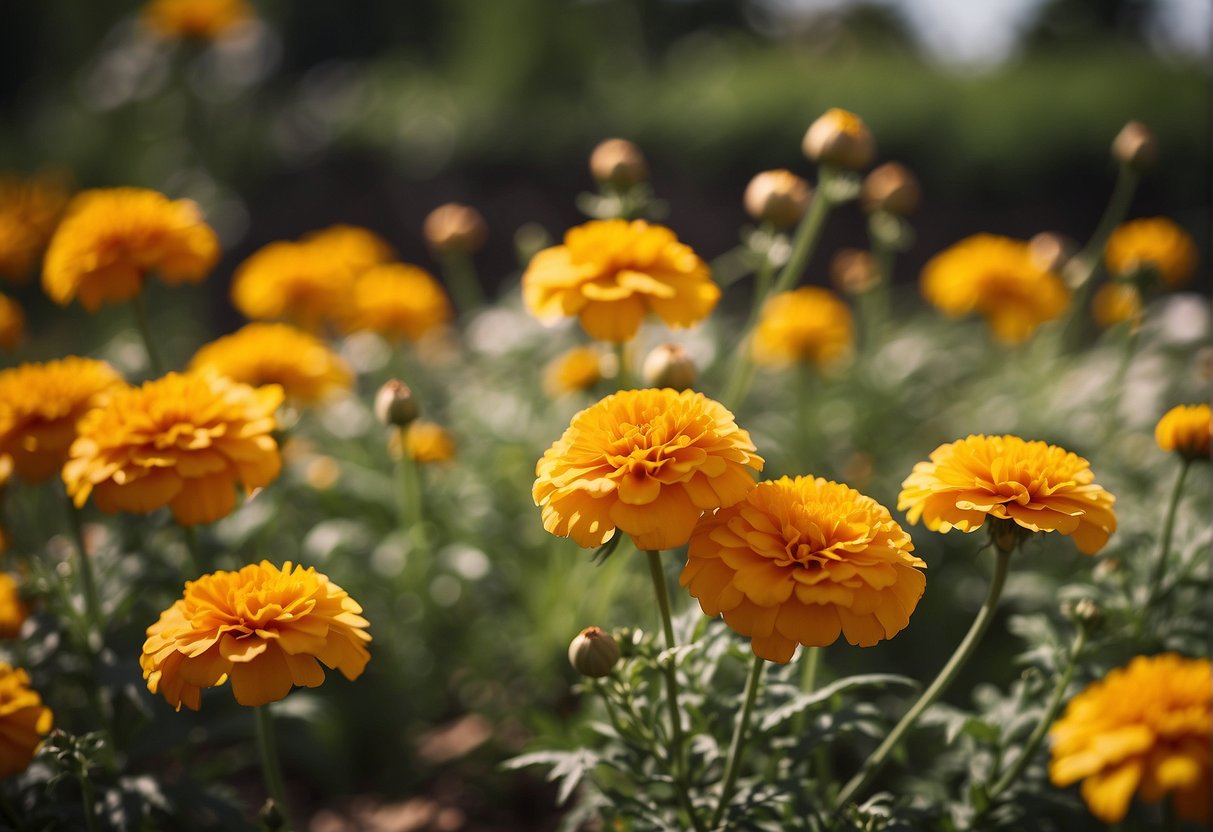Gardeners often wonder whether marigolds, with their vibrant shades of orange, yellow, and red, will grace their gardens year after year without the need for replanting. Based on my knowledge and experience, the answer largely depends on the species of marigold and the climate in which it is grown. Most commonly found in gardens are annual marigolds, which include French and African marigolds. These types flower profusely throughout the summer until the first frost, then die with the onset of cold weather.

However, there is a perennial species, the Mexican marigold, which can return each year if the conditions are right. In warmer climates, these marigolds can survive the winter and regenerate in the spring. Yet in cooler regions, they might not be as robust.
I’ve noticed that marigolds can also reappear through self-seeding. The annual varieties often drop seeds, which can sprout the following spring, giving the impression that the plants are perennial. Cultivating a garden that encourages marigolds to return involves understanding their lifecycle and how to facilitate conditions that support their growth and reproduction cycle. This includes learning about the best practices for seed harvesting, the timing for pruning, and the optimal conditions for ensuring the marigolds you plant continue to provide beauty and utility as a companion plant in the vegetable garden year after year.
JUMP TO TOPIC
Cultivating Marigolds
Marigold cultivation combines simple planting procedures and straightforward maintenance to ensure these vibrant flowers thrive in your garden. They require full sun exposure and well-draining soil to germinate and flourish. Let’s discuss specific practices to optimize their growth.
Planting and Germination
- Depth: Plant the seeds about 1 inch deep into the soil.
- Spacing: Space seeds approximately 1 inch apart.
- Soil Conditions: Use well-drained soil with a neutral pH level (6.0 to 7.0).
- Ensure to plant after the last frost has passed to protect the seedlings.
I ensure that the soil is kept moist, but not waterlogged, as the seeds begin to sprout.
Caring for Growing Plants
Care Tips:
I find marigolds to be low-maintenance. Once established, regular watering during dry spells is crucial, especially in hot weather. Fertilization is not necessary, but if I do fertilize, it’s only once a month with a balanced formula. I also pinch back early buds to encourage bushier growth and more blooming.
Managing Pests and Diseases
Common Pests:
- Aphids
- Nematodes
- Whiteflies
- Snails and slugs
Common Diseases:
- Powdery mildew
To manage these, I maintain good air circulation around the plants and remove any infested or diseased plant parts immediately. For snails and slugs, manual removal or barriers can be effective.
Marigold Varieties and Selection
In my experience with marigolds, choosing the right type is crucial for garden aesthetics and maintenance preferences. Below, I detail the characteristics and needs of different marigold varieties.
African vs French Marigolds
African marigolds (Tagetes erecta) are taller and have larger blooms compared to the compact and daintier French marigolds (Tagetes patula).
While both types are annuals, blooming for one season before succumbing to frost, their aesthetic value and use in the garden differ significantly. African marigolds often reach up to 3 feet in height and produce large, pompom flowers that can be essential for creating visual impact in the back borders of a garden bed. On the other hand, French marigolds typically grow around 6-18 inches tall with a profusion of smaller flowers, making them ideal for edging paths or as companion plants in vegetable gardens due to their pest-deterring properties.
Other Marigold Types
When I diversify my garden with marigolds, I also consider the lesser-known types such as signet marigolds (Tagetes tenuifolia) and perennials like the Mexican marigold (also known as Tagetes lucida).
Signet marigolds are known for their delicate, fern-like foliage and dainty flowers that can bring a soft texture to the garden space. I’ve found that they are also edible, with a slight citrus flavor that adds a pleasant note to salads. Unlike the popular annual marigolds, perennial marigolds like the Mexican marigold can withstand multiple seasons in the right climates. They tend to die back to the soil line in winter and return in spring, providing a more permanent solution for those looking for year-round garden interest.
- Calendula (often called pot marigold, though not a true marigold)
- Tagetes minuta (known for its height and pungent scent)
Companion Planting and Ecosystem Benefits
Companion planting is more than a practice, it’s a philosophy I apply in my garden. The idea? Pair certain plants together to create a symbiotic environment. This enhances growth, repels pests, and can even improve flavor.
Marigolds are exemplary when it comes to companion planting. I’ve personally found that these vibrant flowers are more than just decorative, they offer a multitude of benefits to nearby vegetables and herbs. For instance, when I plant marigolds with tomatoes, they seem to ward off harmful nematodes that typically plague tomato roots.
- Tomatoes 🍅 – protect from nematodes
- Cucumbers 🥒 – deter pests
- Carrots 🥕 – benefit from improved soil
- Potatoes 🥔 – less vulnerable to insects
Not only do they defend against soil pests, but marigolds also attract pollinators like bees 🐝 and butterflies 🦋 with their bright flowers. These pollinators are vital for the productivity of crops. Conversely, Marigolds attract beneficial insects that prey on common garden pests, reducing my need for chemical controls.
Herbs are also part of the companion planting strategy. Aromatic herbs often complement marigolds by enhancing their pest-repelling properties.
💥 Companion Herbs:
| Herb | Benefit to Marigolds |
|---|---|
| Nasturtiums | Attract aphid-eating insects, reducing pest numbers. |
| Basil | Enhances growth and flavor of marigold’s companions. |
As I intermingle these plants, my garden transforms into a more efficient, self-sustaining ecosystem. This, in turn, fosters a natural resilience in the garden, making it more robust and vibrant.












